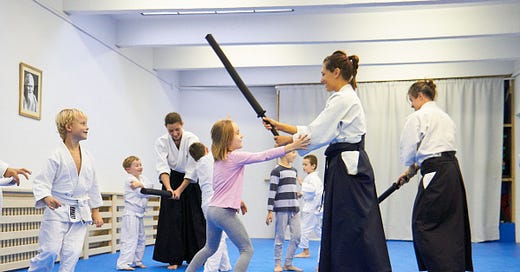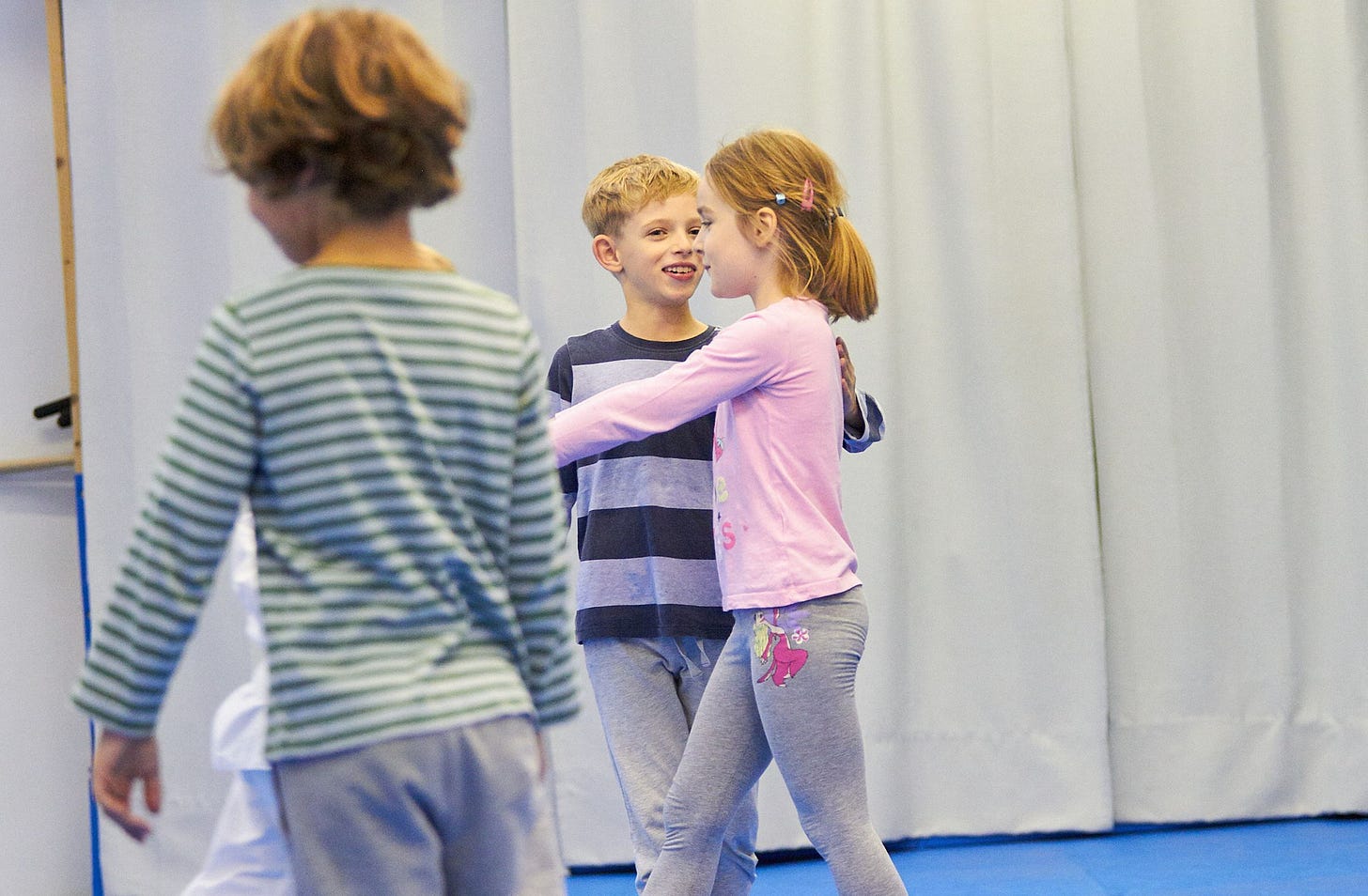Aikido: A Space for Children to Be Children
Creating a Space for Kids to Move, Play, and Be Themselves
You know how it is—if you want to make God laugh, tell Him your plans.
My plan for today was to publish an article about how we teach mae ukemi to beginners—from the very first steps to full integration into techniques. A step-by-step video tutorial… I think you’d enjoy it.
It’s almost done, but some personal matters this week kept me from finishing the last few videos.
Things like this happen, so instead, I’m offering you another piece—a text I originally published as a column in the Czech edition of Metro magazine a few years ago.
You can take it as a teaser for a series of articles on teaching children, which might kick off here this summer.
Here it is:
A Space to Stay Children
When I was about eighteen, I started leading Aikido classes for kids. Suddenly, I had a group of fifteen little wild students, ages six to ten, and I found myself asking: What’s the real goal of these classes?
Is it perfect technique?
Or toughening their bodies and minds so they can fight in what seems like a dangerous world?
Or blind discipline—repeating the teacher’s commands under the label of “Eastern philosophy”?
Sure, kids could learn all that. With enough drills, shouting, discipline, and a few tears, they’d probably learn the techniques even better than adults. Just like trained monkeys learning a few cheap tricks in a circus.
So instead, I set a different goal:
I wanted to help these kids grow into free and creative people, with natural respect for others and a joy for life.
But then, during every class, I realized something funny—The kids already knew all that.
They were alive, spontaneous, and real—way more than I was then.
At first, I thought, Maybe they don’t even need my classes. But when I looked around, I saw that school, clubs, and sometimes even home were often trying to turn kids into those trained monkeys1.
So I decided:
My Aikido classes would be a space where kids could still just be kids a little longer—Where they could grow in their own way, move, play, wrestle, and gently connect with others.
A space where they could express themselves as they are—And where rules and discipline exist not for control, but for safety, cooperation, and fairness.
Do we, as adults, still have a safe space like that inside us? A place where we know how to be children again? And more importantly, can we create that kind of space for our kids?
Yes, I know—it’s a broad goal. We also have more specific ones for our children’s classes.
What’s your goal when you lead classes for kids?
That was 30 years ago. Nowadays, it’s much better in Slovakia and Czechia.





